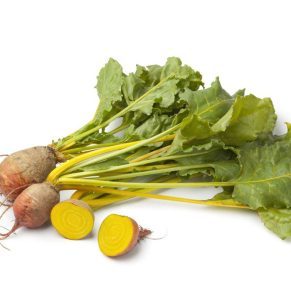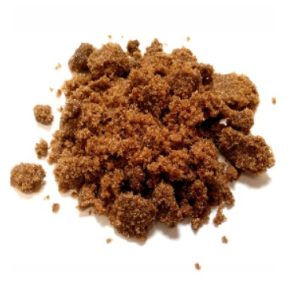- Your cart is empty
- Continue shopping
Raw Honey (small bee)
What is raw honey?
Raw honey is not filtered or pasteurized.
Honey is a sweet, golden liquid made by honeybees. Honeybees store their honey in small, hexagonal cups called a honeycomb. Raw honey comes straight from the honeycomb.
Honey from the hive contains bee pollen, beeswax, and parts of dead bees. Honey manufacturers will usually pass raw honey through a filter to remove as many impurities as possible, but some generally remain. It is still safe to eat.
Unlike raw honey, regular honey undergoes a pasteurization process. This means manufacturers have heated it to kill yeast cells that can affect its taste, increase its shelf-life, and make it look more transparent and attractive. However, pasteurization may adversely affect the number of nutrients in the honey.
Some historical evidence estimates that humans have used honey for over 8,000 years. During ancient times, people would have used raw honey, but today, most people use pasteurized honey.
Honey naturally offers the following healthful properties:
- antibacterial action
- wound-healing effects
- dietary antioxidants
- anti-inflammatory effects
Raw honey also contains bee pollen and bee propolis, which is a sticky, glue-like substance bee use to hold their hive together. Regular honey may not contain the same levels of bee propolis and bee pollen as raw honey.
A 2017 review on honey and a 2015 review on bee pollen report that bee propolis and bee pollen can offer anti-inflammatory, antioxidant, antibacterial, and anticancer properties.
The following sections explore seven evidence-based health benefits of raw honey.
Everything you need to know about honey
READ NOW
- Antioxidant effects
Researchers believe that some of the main health benefits from honey come from its antioxidant content.
Natural honey contains a range of compounds that act as antioxidants, including phytochemicals, flavonoids, and ascorbic acid.
Antioxidants reduce oxidative stress in the body by mopping up free radicals. Scientists have linked oxidative stress to a range of chronic health conditions, including many cancers. By eating an antioxidant-rich diet, people can reduce their risk of chronic disease.
Some people believe that pasteurization reduces the number of antioxidants in the honey, meaning that pasteurized honey may not offer the same benefits as raw honey.
There is no specific research into how pasteurization affects the antioxidants in honey, but studies show that heating other foods can reduce their antioxidant content.
- Nutrition
Honey contains specific nutrients that can make it a healthful addition to the diet.
The exact nutrition and chemical composition of raw honey varies between different countries and environments and depends partly upon which types of flowers the bees gather their nectar from. Regardless of these factors, honey still contains healthful compounds, such as antioxidants, amino acids, and vitamins.
One tablespoon or 21 grams (g) of raw honey contains 64 calories and 16 g of sugar. These values may vary between brands and batches.
Natural honey naturally contains small amounts of the following vitamins and minerals:
- niacin
- riboflavin
- pantothenic acid
- calcium
- magnesium
- manganese
- potassium
- phosphorous
- zinc
However, even with its fructose content, honey may be a healthier option than table sugar. Some research suggests that honey may offer a protective effect against diabetes and some types of honey may help improve cholesterol levels.
People who have diabetes or who are on sugar-restricted diets may choose to eat honey in moderation to avoid significant changes in their blood sugar levels. Pure honey has a glycemic index (GI) of 58, meaning it has a medium effect on blood sugar levels.
- Antibacterial action
Honey can help clean wounds and prevent infection.
Honey is a natural antibacterial and antimicrobial agent. It contains hydrogen peroxide and glucose oxidase and has a low pH level, which means it can kill harmful bacteria and fungi. Also, because of its unique chemical composition, it does not help yeast or bacteria to grow.
Because of its antibacterial action, people can use it to cleanse wounds,
Research has shown raw honey, can kill common pathogens including:
- Escherichia colior coli, a bacteria that causes food poisoning and wound infections
- Staphylococcus aureusor aureus, a microbe that causes skin infections
- Helicobacter pylorior pylori, a bacteria that causes stomach ulcers and chronic gastritis
- Wound healing
Numerous studies have suggested that honey works well as a wound healing dressing.
A review confirms that honey is useful in wound healing because of its antibacterial, anti-inflammatory, and antioxidant properties. Some evidence also suggests that honey has antiviral and antifungal properties.
Also, honey is acidic, which helps release oxygen from the wound and promote healing.
Apply raw honey directly to minor cuts and burns then place gauze or a bandage over the wound. Alternatively, people can purchase manuka honey products for wound care at some drug stores, or choose between brands online.
- Relieving coughs
Several studies have suggested that honey may be as or more effective than some over-the-counter (OTC) cough medicines. Many cough medicines are not safe for younger children to take, so honey may be a good alternative for children over one year of age.
A meta-analysis suggests that honey may provide an effective way to decrease the severity and frequency of a child’s nighttime cough. One small-scale study found that a milk and one type of honey mixture relieved children’s coughs as effectively as an OTC medicine.
To relieve a cough, take a teaspoon of raw honey and avoid other liquids or foods afterward to allow the honey to coat the throat.
- Treating diarrhea
Raw honey may have a soothing effect on digestion, helping with symptoms of diarrhea.
A study of 150 children with acute gastroenteritis found that those who received honey with an oral rehydration solution had a better recovery from diarrhea than those who did not receive honey. The children who received honey had fewer bowel movements and recovered faster from the illness.
To help treat mild diarrhea, try taking a teaspoon of raw honey or mixing honey with a drink. Avoid taking too much honey because excess sugar can make diarrhea worse.
- Protecting the brain
Raw honey has anti-inflammatory properties.
Some evidence suggests that honey may have antioxidant and anti-inflammatory powers that can benefit the brain. An animal study found that rats that consumed honey had protection against brain damage caused by exposure to lead.
In addition, a review states that raw honey may contain ingredients that help fight inflammation in the hippocampus, a part of the brain involved in memory.
Risks
If a person is not allergic to bee pollen, raw honey is generally safe to use.
The Centers for Disease Control and Protection (CDC) say that people should not give honey to infants under the age of 1 because of the risk of infant botulism. Honey is safe from the age of 1 upwards. This applies to both raw and regular honey.
Choosing the right kind of honey
Raw honey will have a label that reads “raw honey.” If the label does not include the word “raw,” or does not come directly from a farmer or beekeeper who can confirm that it is raw, the manufacturer has probably pasteurized it.
The label may also describe the type of flowers that the bees pollinated to make that honey. The kind of flower determines the taste, color, and antioxidant and vitamin content of the honey.
Many types of pasteurized honey have labels that read “pure honey.” Others may say “clover honey” or may state that they come from a local area. Even products labeled as “organic honey” may not be raw, as some manufacturers do pasteurize organic honey.
Some processed honey products contain high fructose corn syrup or other additives. Check the label to make sure the honey is pure.
Raw honey has become more popular in recent years, and people can now buy it from many grocery and health food stores. Farmers’ markets also sell raw honey, sometimes directly from the beekeeper.
Online stores offer a wide range of brands of both raw small bee and large bee honey and regular pure honey.
When raw honey turns to ‘sugar’
Raw honey may crystallize after a few months of storage. This means that the honey gets a grainy or sugar-like texture. Crystallized honey is safe to eat and has the same taste.
To make the honey liquid again, use a gentle heating technique:
- Boil a pot of water and remove it from the heat.
- Place the container of honey in the hot water. Do not allow the water to reach the top of the honey container to avoid contaminating it.
- Remove the container of honey after a few minutes. If it is still solid or crystallized, repeat the process.
Do not microwave raw honey or put it directly in boiling water or on a hot stove top, as this may destroy some of its nutrients.
Summary
Raw honey may contain nutrients that regular honey does not. This means raw honey could potentially offer more, or more powerful, health benefits. However, research has not confirmed this. Raw honey may contain extra elements, such as bee pollen and bee propolis, which can offer additional antioxidant and antibacterial properties. Research on the medicinal uses of raw honey is promising. The studies on its healing properties and nutrition suggest that raw honey may be a more healthful sweetener than sugar.
Pure Honey (small bee)
Pure Honey (small bee) is the epitome of natural goodness. Indulge in the rich flavors and health benefits of this exquisite honey, handcrafted with care and precision. Enjoy the convenience of online delivery in Lahore and experience the unparalleled taste of 100% pure raw honey, brought straight to your doorstep. Savor the authenticity of real honey with our reliable and efficient pure honey delivery service throughout Pakistan, specifically in Lahore. Discover the true essence of raw honey, sourced from the finest locations, and elevate your culinary experience with pure raw honey delivery in Lahore, Karachi, Islamabad and across Pakistan.
| Weight | 0.5 kg |
|---|
















